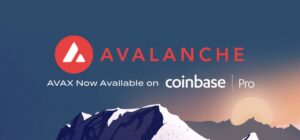I recently joined the season 2 cohort of the Raid Guild DAO and as part of that experience had to pledge 1 wxDAI to obtain shares in the cohort DAO. Simple, I thought, just swap some ETH to DAI, bridge that to xDAI and then wrap it to wxDAI.

I forgot about transaction fees. Swapping 3$ worth of ETH to DAI would have cost me ~32$ worth of ETH. Pretty outrageous if you ask me. This got me thinking and I found some Matic/Polygon I bought a while ago, swapped that to DAI and bridged to xDAI for fees totalling less than a couple of cents. Low transaction fees feel great, they make you want to use a system like Packy describes it for Solana:
You don’t need to think twice about doing anything because it moves so quickly and costs so little. That’s the point. It feels like using the internet.
Low transaction fees are great, but every chain has their reason for implementing the way they did and Ethereum / Bitcoin have one that justifies its high transaction fees.
Vitalik calls it the scalability trilemma (see image below); some chains will sacrifice security and/or decentralisation for scalability. So if my transaction on Polygon goes through quickly and costs little, this means fewer validators will be validating transactions (less decentralised) and/or the network will be overall smaller and thus more vulnerable to a 51% attack.
Every blockchain has to decide where it wants to play and there will probably be different chains for different use cases. In 10 years Defi won’t be running on just one chain, but will consist of many different chains, each with their own pros and cons. These chains of course will be connected, like Polygon is connected to Ethereum and Ethereum is to xDAI. The connection is called a bridge and many of them have already been built.
This great overview by Larry0x shows a bunch of different L1 chains, L2 solutions and side chains and how they are connected to each other. The image misses a lot of different chains and bridges, but I think it’s still a good overview of the most important ones and how the ecosystem could evolve. Let’s briefly look at the different types of chains, how they connect and then get into how tokens flow.
Most bridges work like this: Tokens on Chain A get locked up and an equivalent amount get’s minted on Chain B. Moving tokens back to Chain A burns tokens on Chain B and unlocks them on Chain A. The magic happens in the communication between chains and James Prestwich explains it quite well.
Different chains and different layers can’t simply post transactions to each other, so there needs to be some logic implemented in between. Let’s go through some of the connections of the diagram above and look at how this — in between connection — actually works.
The EVM Union, from the image above, among others, shows Polygon and Optimistic connected to Ethereum. Polygon has two different chain offerings, but one of them is a sidechain, Optimistic is a layer 2 optimistic rollup solution.
Typically a sidechain is described as a chain with a separate consensus mechanism that is connected to a main chain via a bridge and is compatible with the main chain. In the case of Polygon’s sidechain this means that it has its own validators, staking mechanism and a token. A bridge moves tokens between main and sidechain. Additionally Polygon can run an Ethereum Virtual Machine, which makes it compatible with the main chain. Someone deploying an app will hardly notice any difference as compared to the main chain.
- 51% attack
- among
- app
- Bitcoin
- blockchain
- BRIDGE
- Bunch
- cases
- Communication
- Connections
- Consensus
- Costs
- Couple
- DAI
- DAO
- decentralisation
- DeFi
- DID
- ecosystem
- ETH
- ethereum
- experience
- Fees
- flow
- follow
- good
- great
- GV
- High
- How
- hr
- HTTPS
- ia
- image
- Internet
- IP
- IT
- medium
- network
- Offerings
- Other
- Run
- running
- Scalability
- security
- Shares
- sidechain
- Simple
- So
- Solutions
- Staking
- system
- Thinking
- token
- tokenomics
- Tokens
- transaction
- Transactions
- union
- Virtual
- virtual machine
- W
- Work
- works
- worth
- years
- youtube










